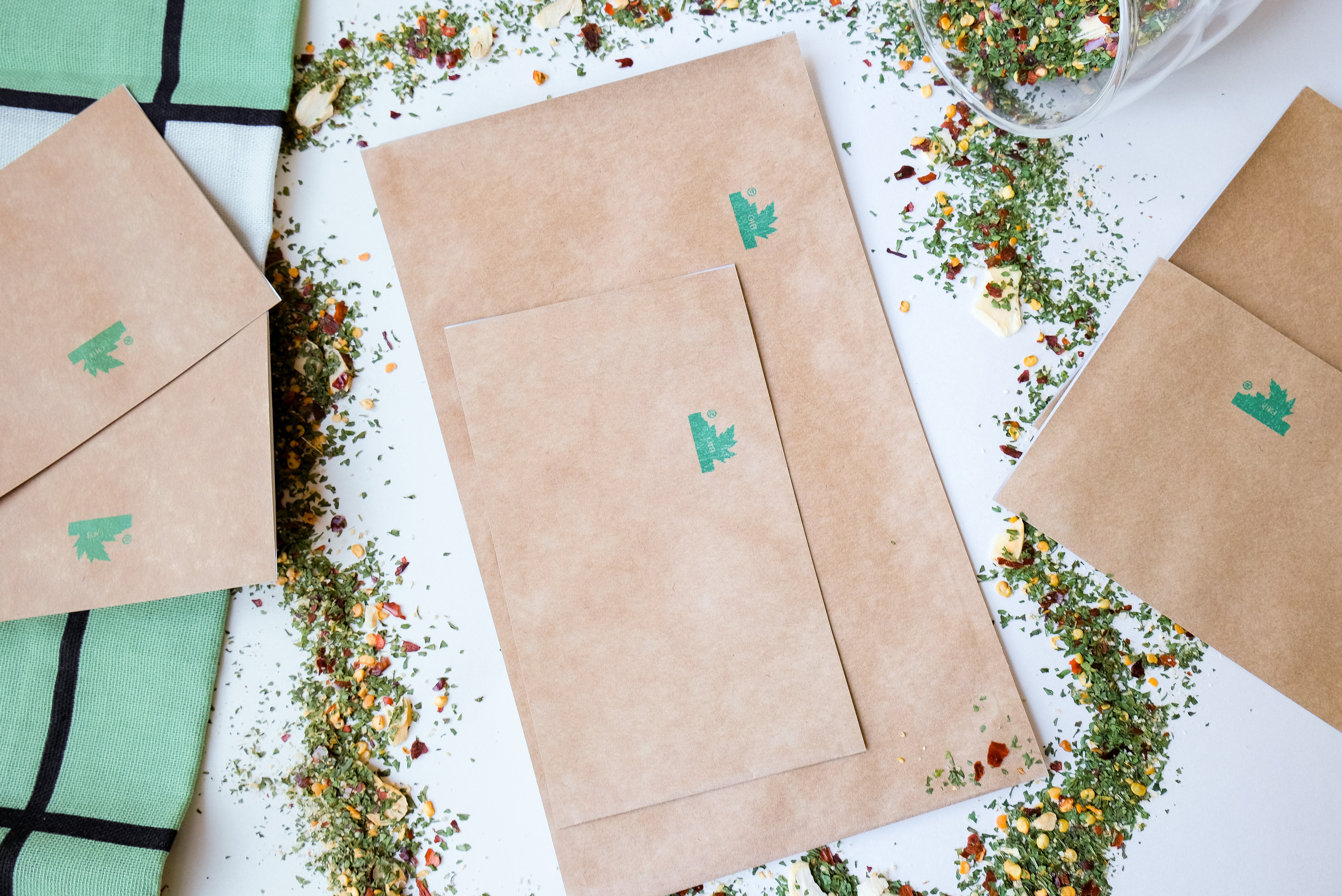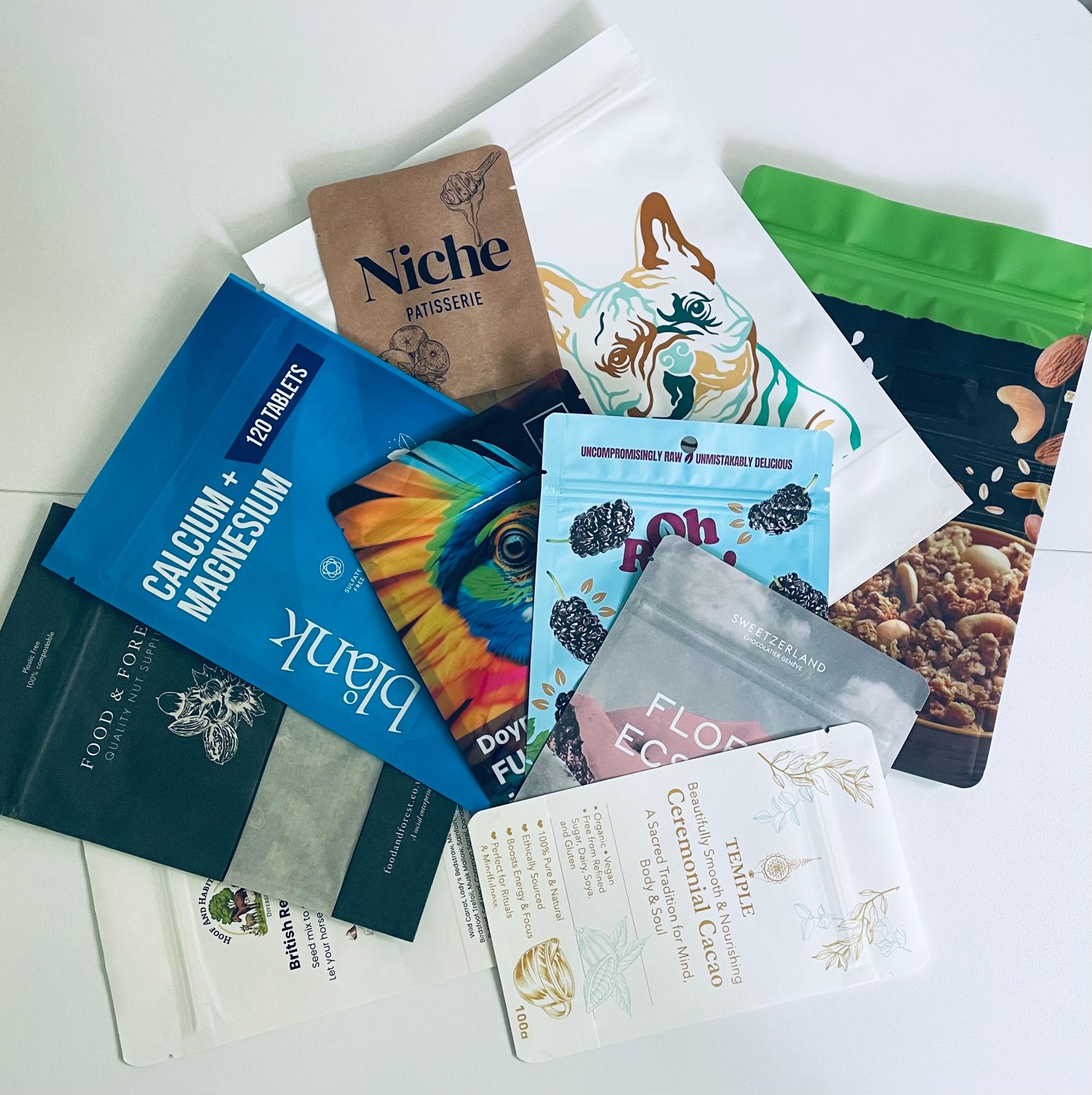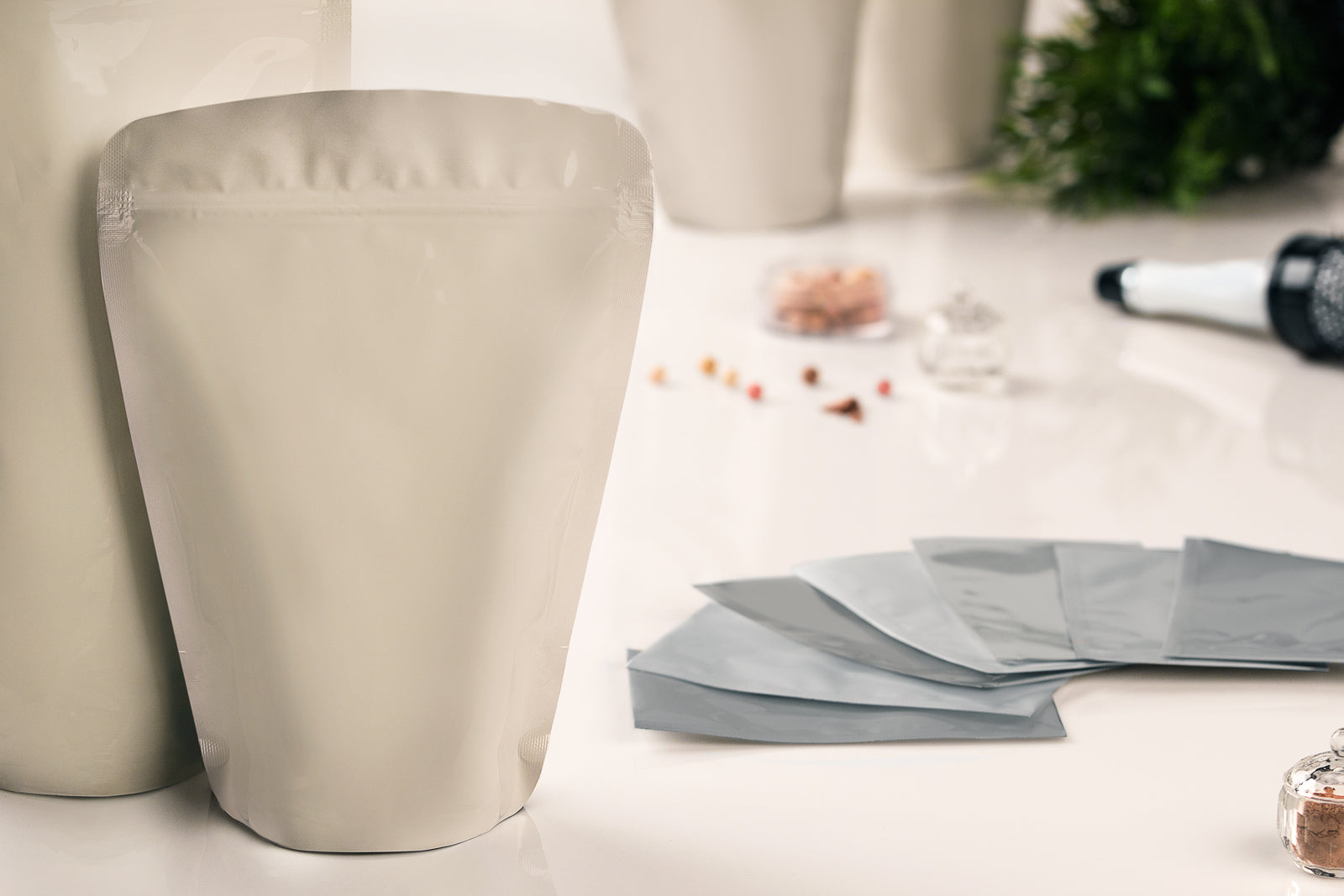Composting Process of Biodegradable Packaging

Why Composting Matters
Composting may sound complicated, full of biochemical reactions and tiny organisms doing invisible work. In reality, it’s one of the simplest and most eco-friendly ways to reduce waste. With just a little space and almost no equipment, you can transform leftovers, garden cuttings - and yes, even biodegradable stand-up pouches - into nutrient-rich soil for your plants.
Instead of sending packaging and food waste to landfill, where it requires trucks, fuel, sorting facilities and huge amounts of energy, you can let nature do the work right at home. Composting is not only better for the planet - it also gives you free, natural fertiliser.
That’s why at Jamo we believe composting is the future. Our eco-friendly pouches are made from fully compostable materials, meaning you can tear them up and add them straight into your compost bin. No guilt, no plastic waste, just a circular process that benefits the environment.
What Is Composting?
Composting, also known as biodegradation, is the natural process of breaking down organic matter into basic nutrients. Microorganisms such as bacteria, fungi, mites and protozoa eat the waste, process it, and leave behind rich soil.
In simple terms:
- You add organic material (food scraps, leaves, biodegradable pouches).
- Microorganisms break it down.
- The result is nutrient-dense compost, which can be used to feed your garden or houseplants.
This process reduces the strain on waste collection systems and cuts the environmental cost of disposal. Every time we throw packaging into a general bin, we start a chain of energy-heavy processes: transport, sorting, incineration or recycling. Composting skips all of that.
Meet the Composting Organisms
Nature has its own workforce. When we talk about composting, we can group the organisms into three levels:
- Macroorganisms (third-level decomposers): larger animals like ants, beetles, slugs and woodlice. They break materials into smaller pieces by chewing or tearing.
- Second-level decomposers: springtails, mites and protozoa. They feed on organic matter and even on first-level decomposers.
- First-level decomposers: bacteria and fungi. Tiny but powerful, they are the main drivers of the composting process, converting complex organic materials into simple nutrients.
Among them, aerobic bacteria (those that need oxygen) are the most important. They are responsible for turning organic waste into the rich brown compost we want.
Oxygen - The Key to Composting Success
To keep bacteria healthy and active, you need oxygen. Aerobic bacteria thrive when the compost pile contains at least 5% oxygen. Without it, anaerobic bacteria take over - and instead of clean decomposition, you get fermentation, foul odours and a slimy mess.
How to keep oxygen levels high?
- Turn the pile regularly (once every week or two).
- Use a compost aerator tool if you have one.
- Avoid compacting the pile too tightly.
By introducing air, you speed up the breakdown process by up to 90%. Oxygen isn’t just helpful - it’s essential.
Preparing Your Own Compost Pile
The theory behind composting is simple - all you need is a suitable storage space and the right balance of organic materials. You can choose an indoor bin (usually around 1 square foot) or an outdoor compost area (typically three times larger).
Wherever you set it up, remember these rules:
- Keep it in a warm, stable environment (20-30°C works best).
- Protect it from pets and wild animals, which love to dig into compost piles.
- Cover it with a waterproof lid or roof - too much water slows the process.
With these basics in place, you’re ready to start building your compost.
Browns and Greens - The Essential Mix
Compost relies on a mix of two types of materials:
- Browns: dry, plant-based materials such as twigs, dead leaves, old newspapers, unbleached tissues - and yes, even used compostable pouches.
- Greens: fresh waste like fruit and vegetable scraps, coffee grounds, or freshly cut grass.
A surprising fact: coffee grounds count as greens, not browns!
For the perfect balance, aim for 70% browns and 30% greens. This ratio ensures that microorganisms get enough carbon (from browns) and nitrogen (from greens) to thrive. Carbon fuels the composting process, while nitrogen allows bacteria - especially Actinomycetes - to grow quickly and break down materials faster.
Moisture - Not Too Wet, Not Too Dry
Moisture is just as important as oxygen. Microorganisms live in tiny films of water surrounding particles of soil. If the pile is too dry, they can’t survive; if it’s too wet, oxygen disappears and decomposition slows down.
The goal:
- 50-60% moisture. The compost should feel like a damp sponge - moist but not dripping.
- Avoid soaking the pile with water.
- If it feels too dry, lightly sprinkle it. If too wet, add more browns like shredded paper or leaves.
Actinomycetes - The Hidden Heroes
Within the group of aerobic bacteria, Actinomycetes play a major role in biodegradation. They specialise in breaking down tougher materials that other microbes cannot handle. As a by-product, they release geosmin - the compound responsible for the earthy smell of fresh soil or rain after a dry spell.
Actinomycetes work best at 20-50°C and prefer moderate, not excessive, moisture. When conditions are right, they transform stubborn organic waste into valuable compost and give your pile that signature earthy aroma.
Using Biodegradable Packaging in Compost
One of the advantages of choosing eco-friendly solutions is that our biodegradable pouches can be part of this process. Instead of sending them to landfill, you can:
- Tear or cut them into smaller pieces before adding them to the pile.
- Mix them with other browns like dry leaves or shredded paper.
- Let microorganisms do the rest - breaking them down into soil-enriching nutrients.
By doing this, you close the loop: your packaging not only serves its purpose during use but also helps to nourish the environment afterwards.
Optimal Conditions for Successful Composting
We’ve already covered the importance of oxygen, moisture and the right mix of browns and greens. Let’s now bring these factors together into one clear recipe for success:
- Ratio: Around 70% browns (dry matter like leaves, paper, biodegradable pouches) and 30% greens (fruit peels, grass, coffee grounds).
- Aeration: Turn your pile regularly - once every week or two - to keep oxygen levels high and speed up decomposition.
- Moisture: Aim for 50-60% moisture. Think of the feel of a sponge - damp but not dripping wet.
- Temperature: Microorganisms thrive between 20-30°C in home compost setups. Actinomycetes, key bacteria in the process, prefer slightly higher ranges up to 50°C.
By maintaining these conditions, you create the perfect environment for microorganisms to work efficiently. Too much water, not enough air or the wrong mix will slow the process and create unpleasant odours.
Step-by-Step: How to Compost at Home
- Choose your compost bin or pile - indoors or outdoors, protected from animals and excessive rain.
- Add a base of browns - twigs, shredded paper, or torn-up compostable pouches.
- Layer with greens - fruit scraps, grass cuttings, vegetable peels.
- Keep layering with a 70/30 balance until your bin is full.
- Turn regularly - aerate every 1-2 weeks to introduce oxygen.
- Monitor moisture - add water if too dry, more browns if too wet.
- Wait and let nature work - within weeks to months, you’ll notice dark, earthy compost forming.
The Payoff - Why Composting Is Worth It
Composting is more than just waste reduction. It’s about transforming unwanted materials into something valuable: natural fertiliser that enriches your soil and helps plants grow. By composting, you:
- Reduce the volume of waste going to landfill.
- Cut the energy needed for collection, transport and industrial recycling.
- Support natural cycles by returning nutrients to the earth.
- Dispose of biodegradable packaging responsibly and sustainably.
Composting in a Nutshell
To summarise:
- Keep the right balance of browns and greens.
- Make sure oxygen, moisture and temperature are at healthy levels.
- Tear packaging into smaller pieces to help microorganisms break it down faster.
- Be patient - nature always delivers results.
As we like to say: don’t waste, compost. With eco-friendly, biodegradable pouches, you can join a movement that’s simple, natural and good for the planet.
So… what are you waiting for? Start your compost pile today - and see how even something as small as your used pouch can come full circle, helping the earth grow. 🌱



